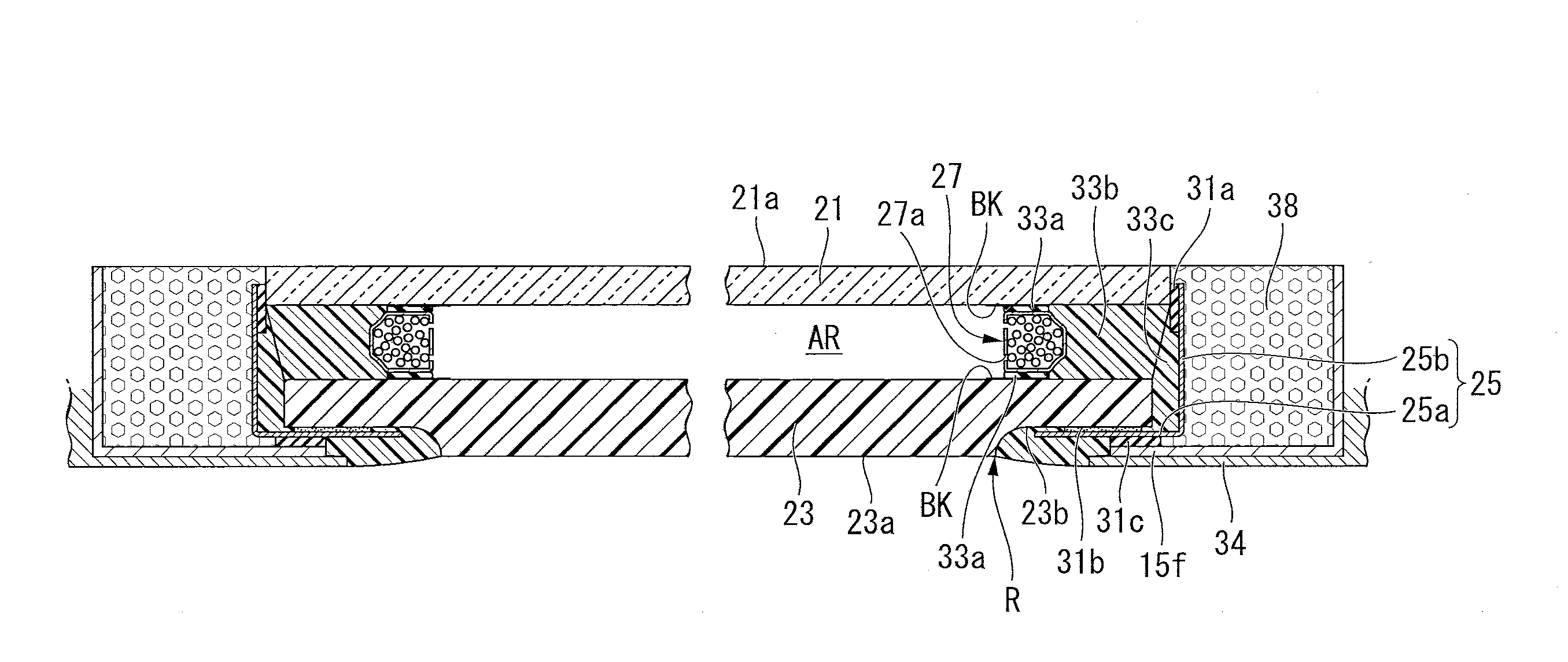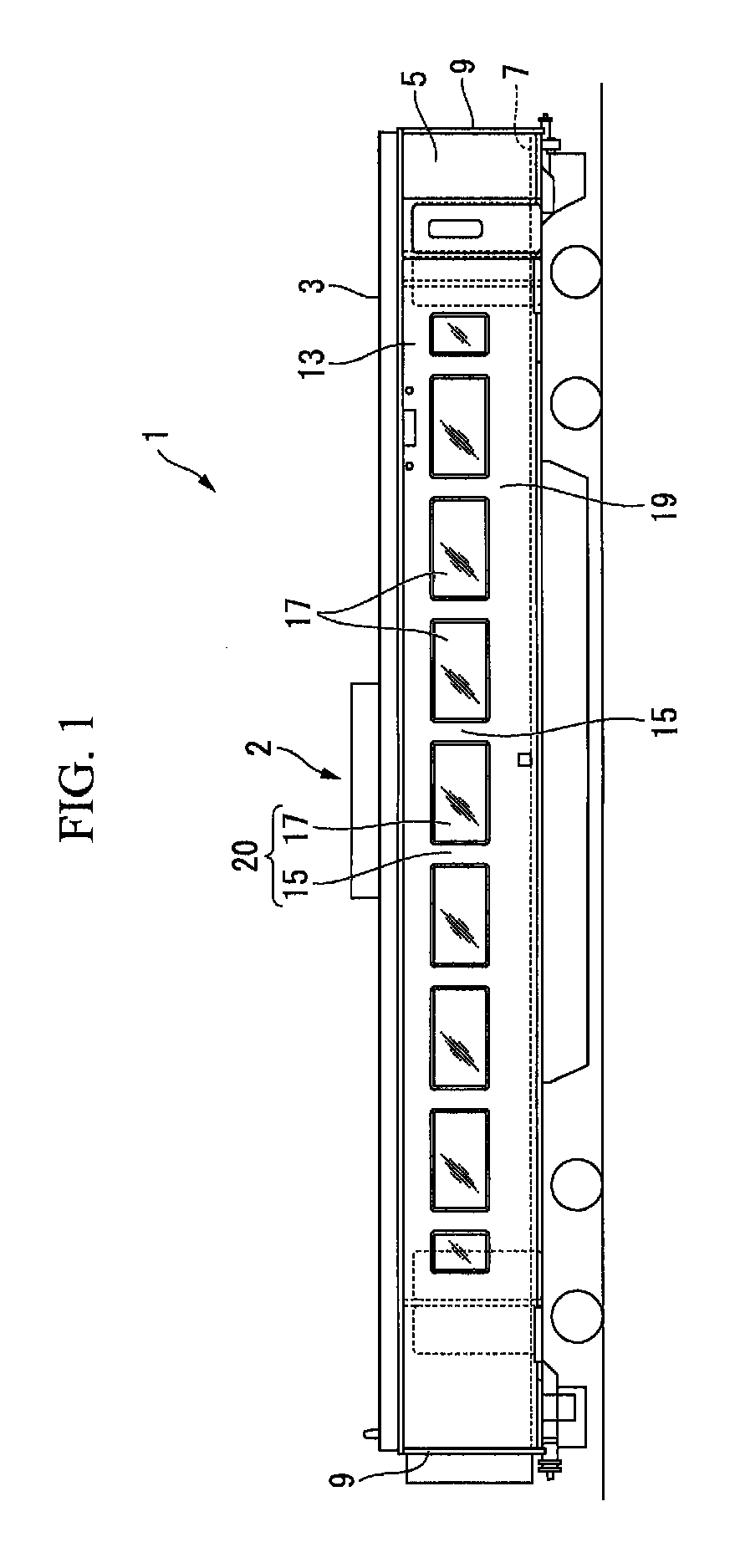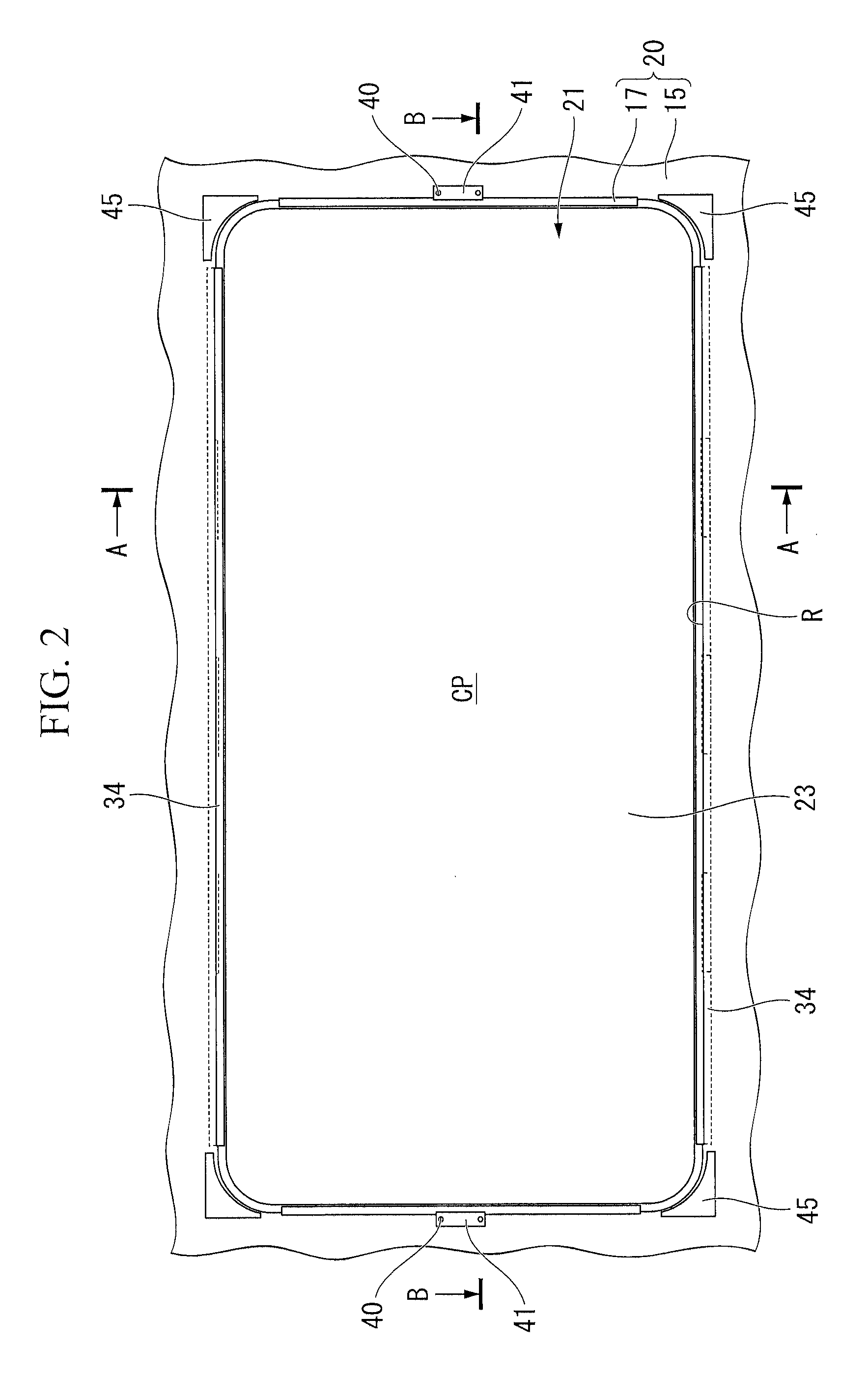Multi-layered window structure
a multi-layered, window structure technology, applied in the direction of parallel plane units, transportation and packaging, and crew accommodation, can solve the problems of reducing affecting the service life of the equipment, so as to prevent cracks or tears, prevent moisture, and limit the edge portion. the effect of the rang
- Summary
- Abstract
- Description
- Claims
- Application Information
AI Technical Summary
Benefits of technology
Problems solved by technology
Method used
Image
Examples
example 1
[0072]In example 1, a multi-layered window structure 20 having the construction described in the above embodiment was manufactured. The conditions of the construction of a multi-layered window unit 17 comprising the multi-layered window structure 20 were as follows.
[0073]For a first window pane 21, a substantially rectangular transparent glass of height 986 mm×width 2036 mm×thickness 4 mm was used. For a second window pane 23, a substantially rectangular window pane of height 984 mm×width 2033 mm×thickness 8 mm, made of transparent polycarbonate, was used. The edge portion (stepped surface 23b) of the second window pane 23 was 5 mm thick over a 185 mm wide strip, and was formed to be 3 mm thinner than the central part of the second window pane 23. Furthermore, under conditions of 18° C. to 25° C., the center CP of the second window pane 23 was curved such that it protruded away from the first window pane 21, by 0.1 mm to 3.0 mm in relation to the periphery of the second window pane ...
PUM
 Login to View More
Login to View More Abstract
Description
Claims
Application Information
 Login to View More
Login to View More - R&D
- Intellectual Property
- Life Sciences
- Materials
- Tech Scout
- Unparalleled Data Quality
- Higher Quality Content
- 60% Fewer Hallucinations
Browse by: Latest US Patents, China's latest patents, Technical Efficacy Thesaurus, Application Domain, Technology Topic, Popular Technical Reports.
© 2025 PatSnap. All rights reserved.Legal|Privacy policy|Modern Slavery Act Transparency Statement|Sitemap|About US| Contact US: help@patsnap.com



